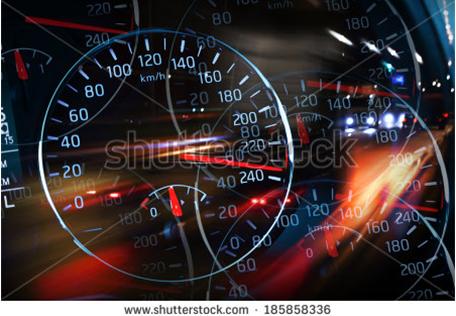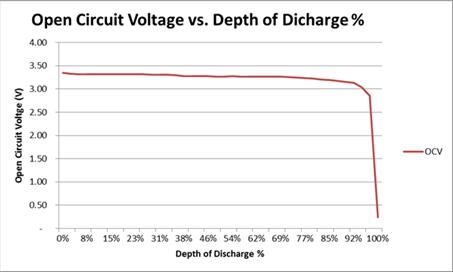
This article refers to the address: http://
My love for electric cars is obvious. I have been driving all-electric cars for more than four years, with a mileage of 60,000 miles and about 100,000 kilometers. There are many reasons why I choose electric cars, but in the end it is because electric cars are really great. It is surprisingly quiet, its acceleration performance is unmatched, there is no need to change the oil, and wherever you want to go, there is no need to consider the impact of speed or time on mileage.
From 4 series (micro hybrid cars) to 12-16 series batteries (light hybrid cars), up to 96 series batteries (electric and hybrid cars), depending on the car's specifications, there will be a section or Many sections are connected in parallel. However, from the perspective of the IC, the number of series Battery sections is the key point, and the number of parallel battery sections can be arbitrarily determined as needed. The Battery Management System (BMS) is an important link between the driver, the car and the battery. The BMS contains electronic components that monitor and protect the battery. I am always curious about the performance of these battery management electronic components, especially the performance of the power management IC such as bq76PL455A-Q1; in fact, it is this device that enables my car to drive normally while improving The performance of the vehicle. As a driver, I urgently need to know the battery's cruising range and the time the car is fully charged. I also want to know if my battery status is not good. I am also happy to know that my car can speed up quickly. Let's take a look at how the different technical specifications of the IC help to achieve the functionality I need.

Cruising range and acceleration
The cruising range is another way to understand the residual charge of the battery. This parameter is called the state of charge (SoC). Anyone with a mobile phone knows that the capacity of the battery will gradually decrease over time. The maximum amount of charge a battery can hold at a given point in time is called the state of health (SoH). There are many ways to calculate SoH and SoC (see TI Impedance TrackTM technology), which calculates battery voltage, battery temperature, and battery current.
Some lithium-ion chemical batteries, such as lithium iron phosphate batteries, have a very flat curve of SoC relative to battery voltage. A small error in the battery voltage can lead to large errors in the SoC estimation.

SoC curve of a LiFePO4 Battery
Monitoring requires measuring voltage, current, and temperature. A monitoring IC such as the bq76PL455A-Q1 has an accuracy of 2mV over a temperature range of 0°C to 65°C for a battery voltage of approximately 4.5V and accuracy over a temperature range of -40°C to 105°C. The value is 4mV. In general, the battery voltage accuracy is largely dependent on the input voltage. Please note that what I am discussing here is true accuracy: this accuracy includes all offsets caused by reflow soldering and the first few thermal cycles. Sometimes, the datasheet specifications will be very different from what you see on the board. Acceleration is also closely related to SoC, and as the battery voltage drops, the maximum power that the battery can produce also drops. Excessive current on any SoC, especially at low SoCs, accelerates battery aging.

safety
So far, the application of batteries in automobiles has been 150 years old, so car manufacturers are also helping in this regard. How did they do it? The time it takes for the car to stop charging and discharging is just right. Typically, a BMS has a separate protector - this is a set of comparators that check the voltage of each cell and ensure that the battery voltage is within the correct range. If the monitor or protector detects that a battery is at an overpressure threshold or undervoltage condition, charging or discharging will terminate. If the monitor or protector underreports the voltage, the other will stop charging and discharging.
In fact, although failures rarely occur, most automakers spend most of their time on car safety development. This is why an IC has so many self-diagnostic features, and a monitor can diagnose the cause of most systems. For example, the bq76PL455A-Q1 is capable of checking for line breaks, has a built-in self test to verify defined internal functions, and is able to assist users in a variety of ways.

cost
Like my love for electric cars, I also hope that electric cars can be cheaper. Obviously, batteries account for a large share of the cost of automobiles. The easiest way to reduce costs is to do more with less. In the field of battery applications, this means a smaller guard band, which in turn means more accurate monitors and protectors. Normally, the protector is not as accurate as the monitor, so the accuracy of the protector actually increases the number of guard bands.
Active and passive battery cell balancing is another important feature. If there is no battery equalization, the large capacity battery will quickly fail. When the first battery is dead, the discharge drive stops. When the first battery is full, charging stops. In the absence of equalization, the first fully discharged battery is independent of the first fully charged battery; battery balancing reduces the difference in charge between the two cells. Passive equalization performs very well in this regard. In fact, you can take an unusable battery pack and equalize it to eliminate drift effects. However, as time passes, the amount of charge that the capacity of the battery section can maintain will also change, and the capacity spread will become larger and larger over time.
There are several other ways to make automakers reduce costs. First generation systems typically use controller area network (CAN) ICs and isolators for communicating with the host controller. This is a relatively expensive form of communication. A new generation of ICs has improved communication methods. Communication is accomplished through an isolated differential universal asynchronous receiver/transmitter (UART) without the need for an isolator, and several bq76PL455A-Q1s can communicate in a daisy-chain configuration. Low-cost capacitors can help you achieve isolation.
Integrated monitors and protectors, as well as the ability of each IC to monitor an increasing number of battery segments, also help to further reduce costs. The bq76PL455A-Q1 is capable of monitoring up to 16 cells and has an integrated protector, which greatly reduces system cost, especially for 48V mild hybrid systems, as a single IC can replace up to 4 IC, 2 12-segment monitors and 2 12-segment protectors.
When I was driving, I was happy with the best technical level in the Car Battery Pack. I am also willing to drive a car with a better, more accurate battery management IC to the future.
Compared to conventional lead-acid starter battery, Starlight Lithium Car Battery has the following seven advantages, the high starting power and long life make it the best companion for the car.
LiFePO4 Car Starting Battery Features:
Superior selection for materials & parts
Exquisite workmanship
Handicraft grade look and workmanship
High class ABS container with abrasive coating
High class brass terminals makes low internal resistance and strong discharge performance
Car Battery
China Automobile LiFePO4 Battery, Lithium Battery Car Starting,Lithium Starting Battery Manufacturer, LiFePO4 Car Starting Batteries
Starlight Power Industrial Company Limited , https://www.starlite-power.com